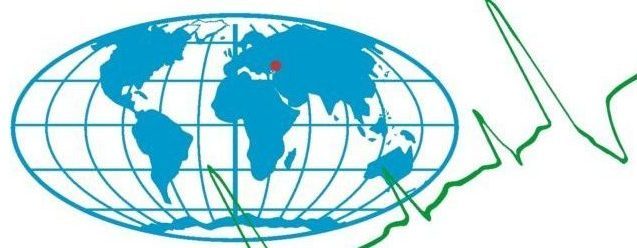Y.E. Shishkin1, A.V. Skatkov2
1Institute of Natural and Technical Systems, RF, Sevastopol, Lenin St., 28
2Sevastopol State University, RF, Sevastopol, Universitetskaya St., 33
E-mail: iurii.e.shishkin@gmail.com
DOI: 10.33075/2220-5861-2021-2-142-151
UDC 681.3
Abstract:
The key task of society development is to ensure rational use of natural resources and related continuous monitoring of natural and technical systems state. Regarding the growing problems of ensuring operational control of critical infrastructure facilities, tasks of epidemiological and environmental protection, solving the issues of developing new information technologies that meet modern requirements for scientific and practical activities and implementing their software and hardware modules for supporting decision-making on the presence of qualitative anomalous changes in monitoring data aimed at ensuring information and metrological reliability of control systems, becomes critical for the life support of the population.
An information technology and a software and hardware module for supporting decision-making on the presence of qualitative abnormal changes in sample data, which are predictors of significant changes in the internal state of monitored objects, natural-technical systems or control devices, are proposed. A method for choosing parametric criteria for the difference in monitoring data using numerical measures of Shannon information entropy and Kullback-Leibler divergence is presented. The use of the developed and demonstrated in practice methodology makes it possible to achieve an increase in the accuracy, convergence and reproducibility of measurements through the use of numerical statistical modeling to obtain a numerical estimate of confident recognition boundaries of a qualitative anomalous change in the shape and shift of the sample distribution of monitoring data, including small samples.
Keywords: statistical clustering, data mining, machine learning, metrological reliability, anomaly detection, numerical modeling.
To quote: Shishkin, Y.E., and A.V. Skatkov. “Software and Hardware Module to Support Decision-Making of Qualitative Abnormal Changes Presence in Sample Data Based on Information Metrics.” Monitoring Systems of Environment no. 2 (June 24, 2021): 142–151. doi:10.33075/2220-5861-2021-2-142-151.
REFERENCES
- Bondur V.G., Voro’ev V.E., and Zamshin V.V. Monitoring antropogennyh vozdejstvij na pribrezhnye akvatorii chernogo morya po mnogospektral’nym kosmicheskim izobrazheniyam (Monitoring of anthropogenic impacts on the coastal waters of the Black Sea using multispectral satellite images). Issledovanie Zemli iz kosmosa, 2017, Vol. 6, pp. 3–22.
- Gubanov V.I., Stelmah L.V., and Klimenko N.P. Kompleksnye ocenki kachestva vod sevastopol’skogo vzmor’ya Chernoe more (Comprehensive assessments of the water quality of the Sevastopol seaside Black Sea). Ekologiya morya, 2002, Vol. 62, pp. 76–80.
- Dunbabin M. and Marques L. Robots for Environmental Monitoring Significant Advancements and Applications, IEEE Robot. Automat. Mag., 2012, Vol. 19, No. 1, pp. 24–39.
- Shishkin Iu.E. and Skatkov A.V. Informacionnye tekhnologii obnaruzheniya anomalij v monitoringovyh nablyudeniyah (Information technologies for detecting anomalies in monitoring observations), Simferopol’: IT “ARIAL”, 2019, 368 p.
- Wu B., Zhang Y., and Yuan D. Design of embedded software for in-situ monitoring system of marine radioactivity based on a buoy. 2019 Chinese Control Conference (CCC), 2019, pp. 15–19.
- Shishkin Iu.E. and Skatkov A.V. Intellektual’naya sistema adaptivnogo vybora scenariev parametricheskogo obnaruzheniya divergencij dannyh monitoringa (Intelligent system for adaptive selection of scenarios for parametric detection of monitoring data divergences) Monitoring systems of environment, 2019, Vol. 2, No. 36, pp. 37–42.
- Kovalev S.M. Metody mnogoshagovogo predskazaniya anomalij v temporal’nyh dannyh (Methods for multistep prediction of temporal anomalies) Izvestiya YUFU Tekhnicheskie nauki, 2013, Vol. 7, No. 144, pp. 85–91.
- Grafkin A.V., Grafkin V.V., and Degtyareva O.A. Prikladnoj analiz sluchajnyh processov (Applied analysis of stochastic processes) Samara, 2007, 582 p.
- Shajtura S.V. Intellektual’nyj analiz geodannyh (Intelligent analysis of geodata). Perspektivy nauki i obrazovaniya, 2015, Vol. 6, No. 18, pp. 24–30.
- Korolyuk V.S. O raskhozhdenii empiricheskih raspredelenij dlya sluchaya dvuh nezavisimyh vyborok (On the discrepancy between empirical distributions for the case of two independent samples). Izv. AN SSSR. Seriya matematika, 1955, Vol. 19, No. 1, pp. 81–96.
- Bolgov M.V. Sovremennoe sostoyanie teorii korrelyacii dlya gidrologicheskih raschetov i stohasticheskogo modelirovaniya (The current state of the theory of correlation for hydrological calculations and stochastic modeling). Vodnoe hozyajstvo Rossii: problemy, tekhnologii, upravlenie, 2012, Vol. 4, pp. 7–20.
- Shishkin Iu.E. and Grekov A.N. Statisticheskie metody klasterizacii izobrazhenij gidrobiontov (Statistical methods of clustering images of aquatic organisms) Monitoring systems of environment, 2020, Vol. 1, No. 39, pp. 153–159.
- Kulbak S. Teoriya informacii i statistika (Information theory and statistics). Moscow: Nauka, 1967, 408 p.
- Hurvich C.M., Tsai C.L. Regression and time series model selection in small samples, Biometrika, 1989, Vol. 76, No. 2, pp. 297–307.
![]()
